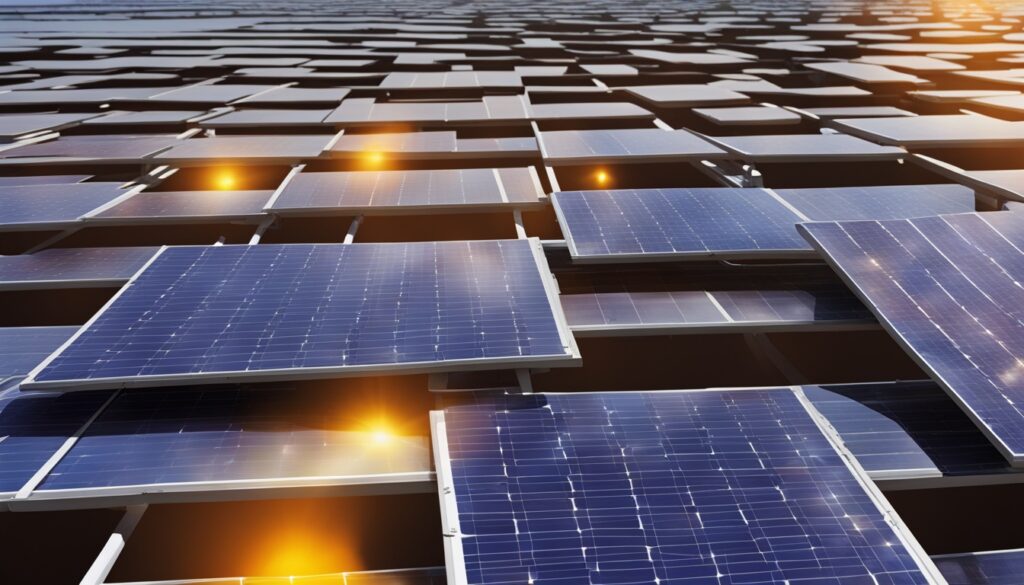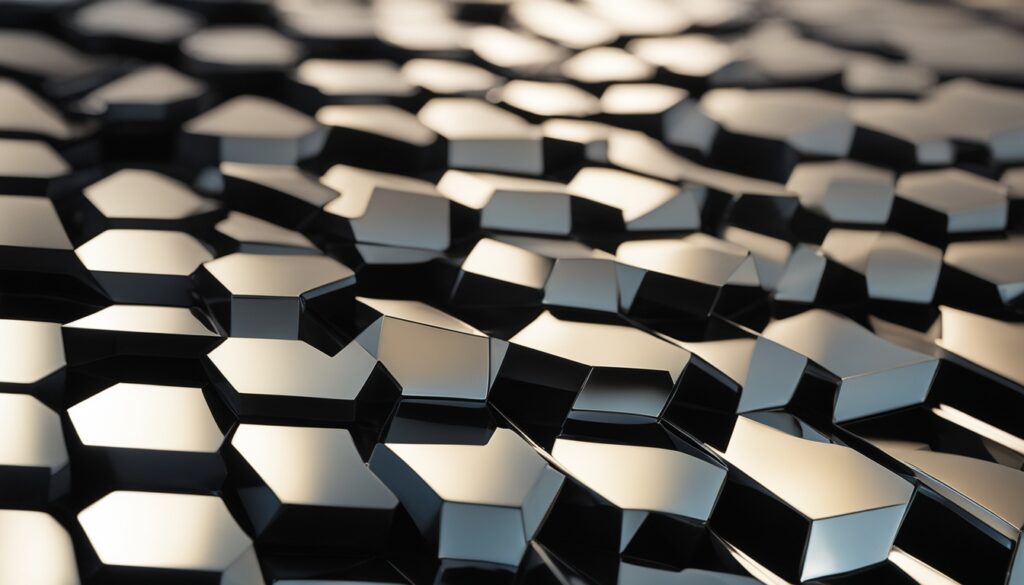Silicone Wafers are key in building modern tech, such as solar panels, capturing the sun’s power. Solar wafer suppliers make sure we have what we need for solar panels. They help power our gadgets and more. And they’re big for energy conservation and making energy.
Key Takeaways
- Silicone wafers are essential components for solar panel manufacturing
- Solar wafer suppliers offer clean energy solutions and the necessary materials
- Solar wafers are crucial for electronics and contribute to energy conservation
- Photovoltaic cells and semiconductor materials are key to solar wafers
- Renewable energy technology and solar cell production need high-quality wafer slicing
Understanding Solar Wafers
In the world of renewable energy, solar wafers are key to using the sun’s power. These are special materials called photovoltaic wafers or solar cell wafers. They change sunlight into electricity using the photovoltaic effect. There are different types, ranging from simple non-crystalline silicon to the powerful single-crystal monocrystalline silicon.
Defining Photovoltaic Wafers
Photovoltaic wafers are like the building blocks of solar panels. They are very different from batteries which need chemicals to work or other energy sources that use fuel. Solar cells don’t have moving parts, which means they’re very dependable and need little care. Home solar cells turn about 20% of sunlight into power. But, the newest commercial systems can be up to 40% efficient, showing how much we are improving in making solar modules.
Functionality of Solar Cells
Solar cells work similar to how plants convert sunlight into food in a process called photosynthesis. When sun rays hit the solar cell, they set off photons to move through different layers. This movement changes into energy as electrons. These electrons then create electricity that powers our needs, using the sun’s natural energy. It is a smart, renewable energy solution turning sunlight into power, good for our planet and efficient for energy conservation.

Industry Frameworks for Manufacturing solar wafer
The solar cell making industry is well-organized. Each group plays a key role. Quartz-based solar cell makers watch over the whole process, starting with raw quartz. They turn it into finished solar cells. Next, quartz-based silicon wafers makers change quartz into wafers. Wafers are then given to those designing photovoltaic panels. These panel makers put everything together to make solar panels work well and stay affordable.
From Quartz to Silicon Wafers
The journey to make solar cells starts with quartz. This quartz is made into silicon wafers. These wafers are crucial for solar cells. Makers of silicon wafers do the hard work, including cutting the wafers. They then send them to places with the tools to make solar cells.
| Key Players in the Supply Chain | Role |
|---|---|
| Quartz-based Solar Cell Manufacturers | Oversee the entire production process, from raw quartz to finished solar cells |
| Manufacturers of Quartz-based Silicon Wafers | Handle the transformation of quartz into silicon wafers, which are then supplied to photovoltaic panel designers |
| Photovoltaic Panel Designers | Responsible for bringing together the components to create fully functional solar panels, ensuring quality and cost-effectiveness |
Exploring the Different Types of Solar Wafers
In the solar wafer world, there are three main types to pick from. This choice is based on what you need and what your business requires. Type A wafers are very pure at 99.999 percent. They are used a lot in smartphones, video recorders, and computer storage devices.
Type B wafers are even purer than Type A but harder to make. They find their place in very specific uses, like in biosensors and in making high-quality color hardware.
If you want to save money and still get good quality, go for Type C wafers. They may not be as pure as Type B, but they are great for making logic chips. These chips are crucial for the operation of computers and smartphones.
| Wafer Type | Purity Level | Key Applications |
|---|---|---|
| Type A | 99.999% | Smartphones, video recorders, computer storage devices |
| Type B | Exceptionally High | Biosensors, high-quality color hardware |
| Type C | Slightly Lower than Type B | Logic chips for computers and smartphones |
Conclusion
Solar wafers are key parts of solar panel production. They help turn sunlight into power for homes and businesses. These discs, made from silicon, are used to create silicon-based photovoltaic (PV) cells.
These cells change sunlight into electricity. Engineers work hard to perfect these solar wafers. They aim to make them as advanced as the newest microchips. This effort shows in the technology used in solar cells and other small parts.
With technology growing, we expect solar wafers to get better. This will happen through improvements in making semiconductor materials and solar cells. As a result, making solar panels will be cheaper and more reliable.
In the push for a greener world, solar wafers play a huge role. They are essential for tackling climate change and ensuring energy safety. Without them, moving towards renewable energy would be much harder.
FAQ
What are solar wafers and how are they used in solar panel manufacturing?
Solar wafers are key parts of solar panel making. They turn sunlight into electricity. This is a big step towards using more renewable energy.
What are the different types of solar wafers available?
There are three types of solar wafers. Type A are very pure, making them good for many uses. Type B, known for their purity, fit special jobs. Type C offer a budget-friendly choice while keeping good quality. They are often used in computer chips and smartphones.
How does the solar cell manufacturing process work?
The process begins with raw quartz, turning it into silicon wafers. Companies who make these wafers ensure they are high quality. Then, they send them to solar cell makers. Many different parts work together to make solar cells available for use.
What are the key benefits of solar cells and how do they work?
Solar cells create sustainable electricity from sunlight. They are strong because they have no moving parts. This makes them last long with little upkeep. When sunlight hits a solar cell, it starts a chain reaction that creates usable electricity.
What is the role of solar wafers in the renewable energy landscape?
Solar wafers are vital for creating efficient solar panels. These panels are for homes and businesses. They are at the core of turning sunlight into electricity. With advancing technology, they will help us make more energy from the sun.

